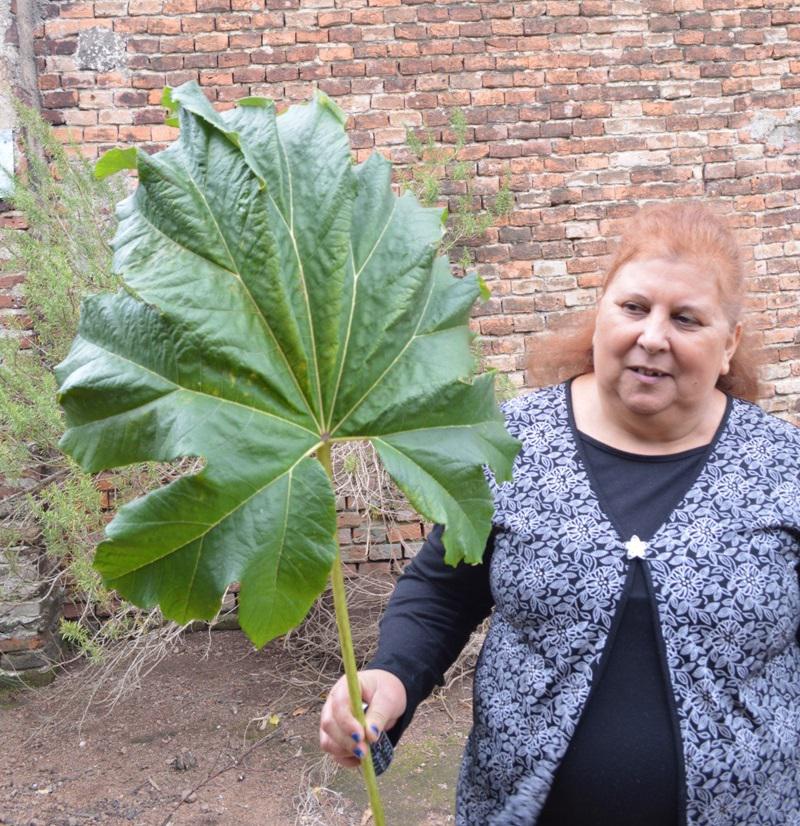Social media video featuring the project.
Etnobotánica_English version
27 Feb 2013 Parque Gran Bretaña, Uruguay, Central and Latin America Plants
We propose to describe and systematize the ethnobotanical knowledge of communities living in and nearby the protected area “Quebradas del Norte-Regional Park”, Rivera, Uruguay.

Mrs. Griselda with “chapéu de couro”, a medicinal plant used for respiratory diseases.
The traditional botanical knowledge (TBK) about medicinal plants is contextualized in the intercultural contact between the original populations (e.g. Guaraní) and the European and African immigrants established in the Uruguayan-Brazilian border. The TBK and medicinal plants has become a commercial option and has moved from the rural people to the city, representing a conspicuous component of the biodiversity-society interface. However, few attentions have been devoted to properly register and understand this relationship. We propose to rescue the TBK focusing on selection, gathering and processing the medicinal plants by local agents, but also the plant uses and the associated symbolic elements. Also, we will construct a reference herbarium in the “Parque Gran Bretaña”, located in the protected area boundary. This herbarium will represent an education tool to disseminate knowledge and make it available to the local society and all interested people. The main contribution of our project is to generate guidelines for sustainable gathering of medicinal plants as a social economic development strategy for the local communities. In this sense, the project will focus in rescuing the TBK in the protected area.
This main objective will be reached by three particular objectives: i) identify the social network associates to TBK, ii) systematize the botanical knowledge by performing survey and community workshop, and iii) building of a reference ethnobotanical herbarium: combining scientific and popular knowledge. Finally we consider disentangle the ethnobotanical knowledge is key to succeed in a communitarian management of natural resources and to achieve conservation goals. The implementation of a systematized herbarium, preserving specimens of regional medicinal plants, will provides insight into the available natural resources and its relationship with the traditional knowledge. In this sense, the herbarium should be considered as novel scientific and educational tool, which have to motivate and support the development of future research, socialization and safeguard the traditional botanic knowledge for future generations.